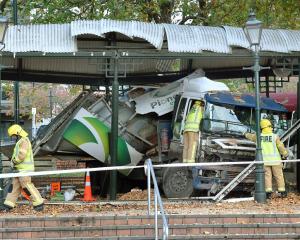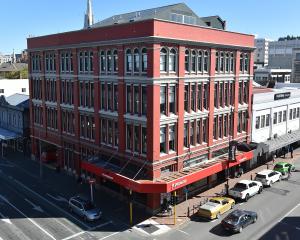Several surfers emphasised the sport's popularity, and the degradation of the beach since the new sea wall was built.
The second and last day of public submissions, before city councillors Paul Hudson, Colin Weatherall and Dave Cull, was held yesterday, at a hearing that is part of investigations into stabilising the city's beaches, which were badly eroded during storms last year.
Issues that came up regularly from submitters included claims land reclaimed near the St Clair Salt Water Pool had added to the erosion, and affected the surf break.
Some suggested northeast swells took sand back to St Clair, contrary to claims sand always headed from St Clair to St Kilda, while others questioned why sand from the harbour was dumped at Aramoana, rather than taken to St Clair.
St Clair resident Barbara Newton, who wrote a book about the area - Our St Clair: A Resident's History - showed photographs of how wide the beach had been in the past.
Mrs Newton said erosion was cyclical. "Any solution should be a soft option, rather than a hard option.''
"Hard'' options include constructions such as sea walls, while "soft'' options include anything from brush fences to sand sausages - long fabric tubes filled with sand.
Mrs Newton said "terrible mistakes'' had been made at the sea wall.
A fore-dune needed to be established, and hard fill removed from the sand hills at Middle Beach.
"It's just got to go. It's unsightly and revolting.''
A secondary dune needed to be established to enable sand to move naturally, and sand replenishment undertaken.
Mrs Newton said some roading and playing fields at Kettle Park would need to be relocated.
Retired engineer Graham Potter suggested a trial of sand sausages to create a mole to stop longitudinal flows along the beach.
Nicola Reeves, a surfer, has been writing a blog about the erosion, and researching the issue.
She suggested using Holmberg Industries' technology of "undercurrent stabilisers'', and also called for dune development with plantings, even if it meant the loss of Kettle Park.
Holmberg is a United States-based company that has approached the council offering its services, and uses low-profile geo-textile tubes placed at an angle perpendicular to the shore, designed to baffle the sea's energy.
Ms Reeves questioned the public submission process, and claimed submitters had not been listened to during consultation on the sea wall.
Rod Rust, of Dr Surf and part-owner of the Hydro building, said it was "indisputable'' the changes to the sea wall near the pool had affected the surf, and contributed to erosion.
He said simple structures that trapped sand, as the Tahuna outfall pier had, should be considered.
The council needed to recognise the mistakes of the past, and "keep it simple''.
While he admitted the technology of artificial reefs was still being proven, Tony Ryder called for a series of reefs using "giant geo-textile bags''.
He described the degradation of the beach as "tragic''.
Esplanade Hotels operator Stephen Chittock told the committee the rocks at St Clair needed to be removed.
A long white sand beach was one of his motel guests' "most memorable memories'', he said in his submission.
"A clean-up of the beach from St Clair to Lawyers Head would go a long way towards enhancing this asset.''
Otago Railway and Locomotive Society chairman Campbell Thompson argued against the idea of moving the Ocean Beach Railway line, and said it was not a simple matter of using any piece of track, as there were legal and planning problems in using the main line.
The society was committed to staying at the beach, and expanding.












